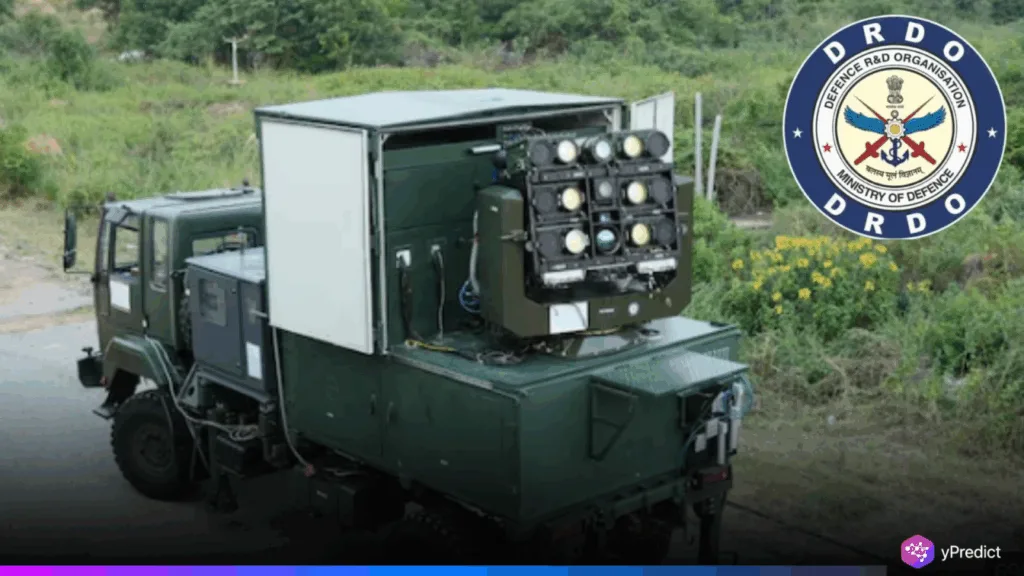
India’s Defence Research and Development Organisation (DRDO) is shifting its focus from conventional weapons to cutting-edge technologies. Like artificial intelligence, directed energy weapons, and quantum systems. Under the “DRDO 2.0” vision, the agency aims to lead India into the next generation of warfare. Dr. B.K. Das, Director General (Electronics & Communication Systems), said DRDO is transforming its core priorities to prepare for tech-driven conflict. “If we want to win the war, it’s going to be the war of technology,” he stated. As DRDO transitions, the production of conventional systems will be handed over to private industry.
Laser Weapons, AI, and Photonic Radar in the Spotlight
As part of DRDO 2.0, advanced tech like high-energy lasers, photonics, and AI is taking center stage. Dr. Das highlighted a new 30-kilowatt laser weapon and India’s first photonic radar, key breakthroughs in the nation’s defense modernization. The team successfully tested the laser system, capable of neutralizing drones and small aerial threats, in the D4 anti-drone platform under real conditions. “These technologies aren’t optional; they’re strategic necessities,” Dr. Das emphasized. With traditional missile intercepts becoming cost-prohibitive in prolonged conflict, directed energy offers a more efficient alternative.
DRDO is also ramping up investment in AI, quantum computing, and cognitive systems to build a long-term military advantage. In reaction to issues raised about missing technology, especially in air power, Dr. Das admitted that there was a lag but explained the nature of the detailed groundwork that goes into deeper research. You do not see the end of the pizza at this point. But we are at work preparing the pizza ingredients, he said. He said that to address acute capability gaps, DRDO is increasingly focused on technologies. Those are on the verge of deployment in the armed forces.
Private Sector and DRDO Partner Through New DCPP Model
To meet growing demands and accelerate deployment, DRDO is involving private companies earlier through its Develop and Produce with Production Partner (DCPP) model. This strategy ensures that the industry is ready for full-scale production when technologies mature. Dr. Das pointed to the success of systems like the D4 anti-drone platform, now in production by Indian private firms and deployed in Operation Sindoor. He praised the rise of a new generation of defense entrepreneurs, noting their growing ambition and technical capacity.
“The industry is coming up in a big way,” he said, citing increased collaboration and successful handoffs of systems such as Akash and BrahMos. This marks a shift in mindset, as DRDO now focuses on strategic, high-risk research while leaving conventional manufacturing to capable partners. Delays in past projects, Dr. Das admitted, were often due to underestimating technical challenges and overpromising timelines. The organization is now adopting more realistic planning, targeting deployable, near-term technologies. With private firms taking the lead in manufacturing, DRDO aims to preserve its research strength for future-defining innovations in AI, quantum systems, and energy weapons.
DRDO 2.0 – India’s Bet on Future Tech Warfare
DRDO’s shift under the DRDO 2.0 initiative marks a turning point in India’s defense strategy. By realigning toward AI, quantum systems, and directed energy weapons, the organization is betting on high-tech capabilities to dominate future conflict. With production now in the hands of the private sector, DRDO can zero in on research that defines next-gen warfare. As Dr. Das put it, “war will be won by technology.” The message is clear: India’s military future lies not in bullets and tanks, but in photons, algorithms, and intelligent machines.






